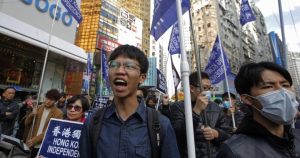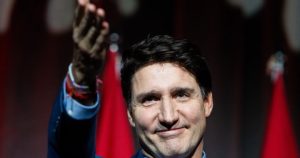A dangerous stand-off in Georgia

Unlock the Editor’s Digest for free
Roula Khalaf, Editor of the FT, selects her favourite stories in this weekly newsletter.
From the EU flags around the shoulders to the goggles and masks against tear gas, the resemblance between protesters in Tbilisi this week and those in Kyiv in winter 2014 is striking. So is the trigger. A decade ago, a Russia-leaning president of Ukraine pulled out of an association deal with the EU; last week, Georgia’s government — backed by a Russia-leaning oligarch and fresh from heavily disputed elections — said it was freezing EU accession talks. Even the Kremlin has noted, ominously, the parallels with Ukraine’s Maidan. A new and dangerous east-west flashpoint has opened up in the south Caucasus.
An irony is that the ruling Georgian Dream party, founded by the billionaire Bidzina Ivanishvili, has largely brought the crisis upon itself. Despite allegations of widespread abuses in GD’s election victory in October — with opposition parties refusing to take up their seats in parliament — popular protests failed to take off. The EU had already de facto put Georgia’s accession process on hold, after the government in May adopted a “foreign agent” law similar to one used by Russia to crush dissent. GD leaders could have insisted EU integration remained their goal, but blamed Brussels for breaking off talks.
Instead, bitterly denouncing EU “meddling”, Prime Minister Irakli Kobakhidze last week suspended Georgia’s accession process until 2028. Many Georgians saw this as shutting the door on the country’s European future — which polling suggests about 80 per cent of Georgians support — and taking to the streets as the only way to keep it open. Unusually, protests have broken out not just in the capital but in various regional towns and cities.
The clashes between demonstrators and riot police are paralleled by a stand-off between the prime minister and Georgia’s elected president, Salome Zourabichvili. After GD ended direct elections to the post, the president is due to hand over when her term ends on December 14 to a successor chosen by an electoral college that includes members of parliament. Zourabichvili, who holds the only major post not controlled by Georgian Dream, says an “illegitimate parliament” cannot elect a president, and she will not step down until new, clean elections are held.
Seemingly intent on preventing the protests taking root, riot police have repeatedly used water cannon against protesters (who have thrown fireworks at police); some demonstrators have reportedly been abducted and beaten up. Masked security agents on Wednesday detained some opposition leaders. If neither side backs down, one outcome could be a “Belarus” scenario of a brutal crackdown and mass arrests. Another is a new “coloured” revolution. But Georgian Dream can point to the real danger then of intervention by Russia, whose forces occupy South Ossetia, barely 45 minutes from Tbilisi.
The combustible situation requires a careful response from Europe and the US. They should be unequivocal in condemning violence against peaceful protesters and urging respect for the Georgian people’s will. They should be ready to sanction officials involved in violent repression. Western capitals are divided over whether to impose punitive measures on Ivanishvili and his circle, for fear of driving them into Russia’s arms. They have arguably been too tolerant for too long of the GD government’s double game of claiming to seek EU accession while extending its state capture.
They should refrain, however, from actions that would be seen as unfair punishment of ordinary Georgians, such as suspending visa-free travel to the EU, or which would restrict links between Georgian and western civil society. Above all, Georgians standing up for their “European future” need to know that, despite the domestic political impediments today, the door remains open to them in the future.
#dangerous #standoff #Georgia




